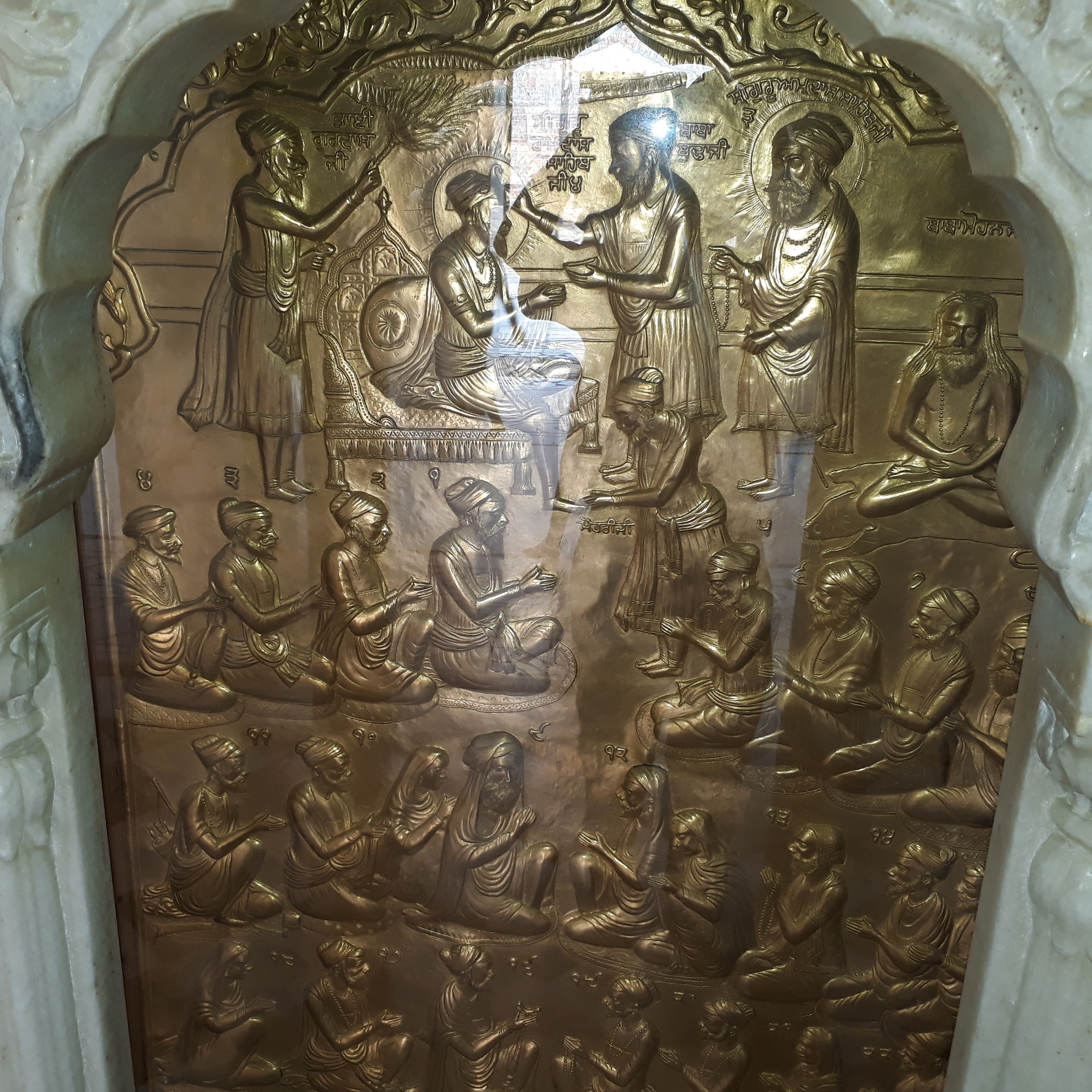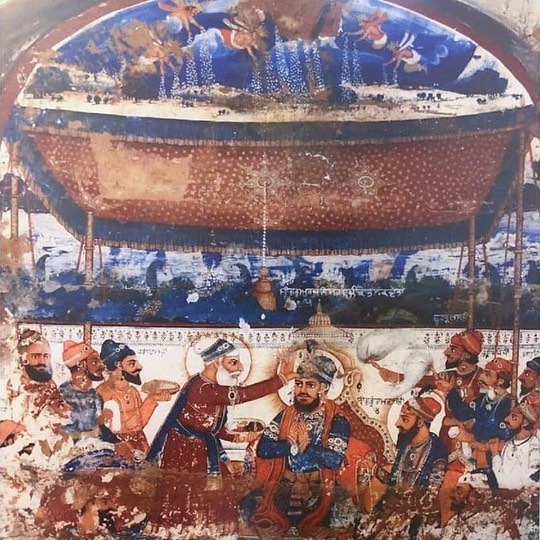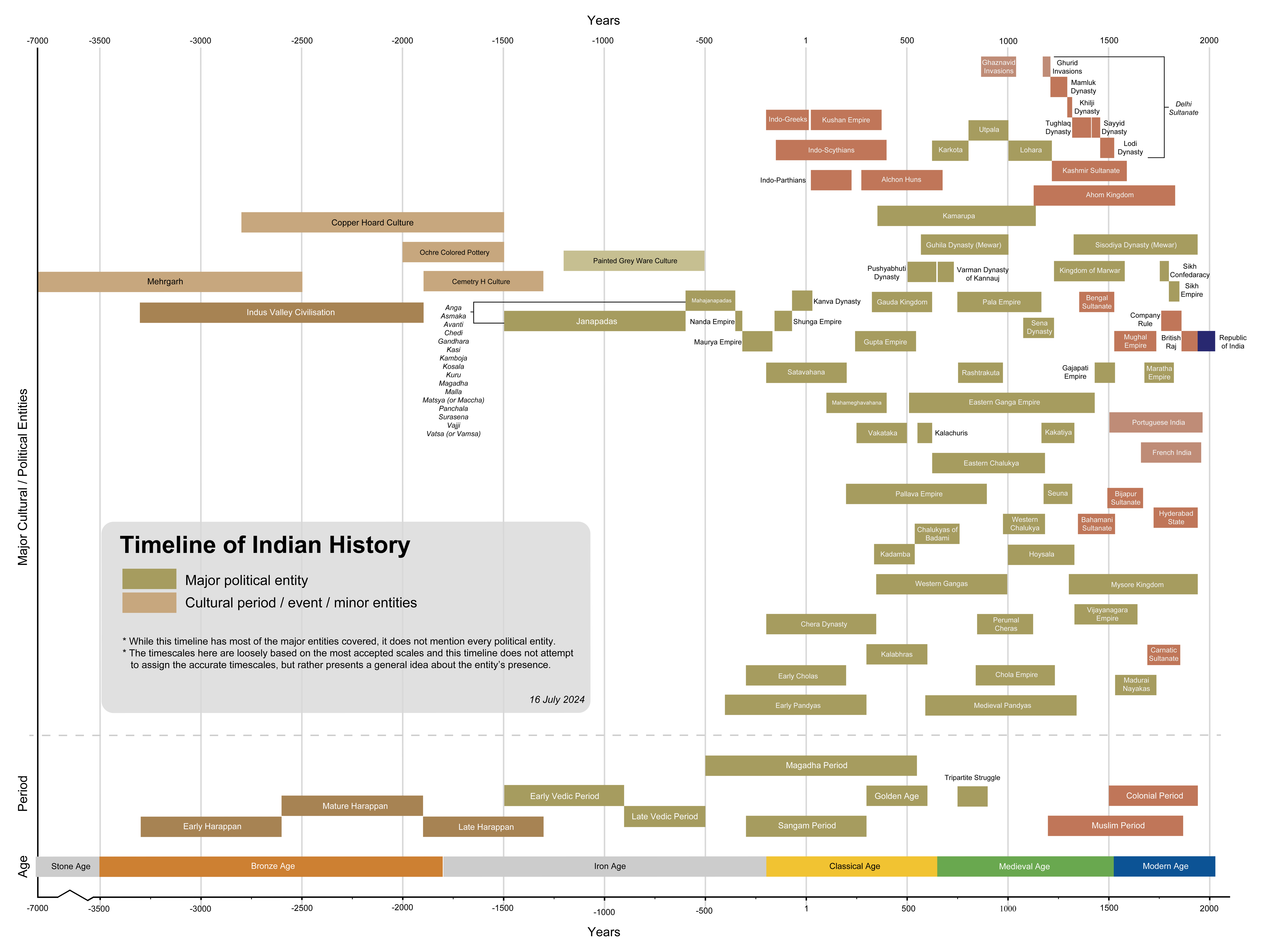|
1535 In India
Events from the year 1535 in India. Events * Siege of Chittorgarh Fort * Bahadur Shah of Gujarat first reign as sultan of Gujarat Sultanate ends (began 1526) Births * 19 January Mata Bhani, also known as Bibi Bhani, daughter of third Sikh guru Guru Amar Das, wife of fourth Sikh guru Guru Ram Das and mother of fifth Sikh guru Guru Arjan Dev is born (dies 1598) Deaths See also * Timeline of Indian history This is a timeline of Indian history, comprising important legal and territorial changes and political events in India and its predecessor states. To read about the background to these events, see History of India. Also see the list of govern ... References 1535 by country Years of the 16th century in India 1535 in Asia 1530s in India {{India-year-stub ... [...More Info...] [...Related Items...] OR: [Wikipedia] [Google] [Baidu] |
Chittorgarh Fort
Chittorgarh (literally Chittor Fort), also known as Chittod Fort, is one of the largest forts in India. It is a UNESCO World Heritage Site. The fort was the capital of Mewar and is located in the present-day city of Chittorgarh. It sprawls over a hill in height spread over an area of above the plains of the valley drained by the Berach River. The fort covers 65 historic structures, which include four palaces, 19 large temples, 20 large water bodies, 4 memorials and a few victory towers. In 2013, at the 37th session of the World Heritage Committee held in Phnom Penh, Cambodia, a group of six Hill Forts of Rajasthan, including Chittor Fort, was declared a UNESCO World Heritage Site. Geography Chittorgarh, located in the southern part of the state of Rajasthan, from Ajmer, midway between Delhi and Mumbai on National Highway 48 in the road network of Golden Quadrilateral. Chittorgarh is situated where National Highways No. 76 and 79 intersect. The fort rises abruptly a ... [...More Info...] [...Related Items...] OR: [Wikipedia] [Google] [Baidu] |
Bahadur Shah Of Gujarat
Qutb-ud-Din Bahadur Shah, born Bahadur Khan was a sultan of the Muzaffarid dynasty who reigned over the Gujarat Sultanate, a late medieval kingdom in India from 1526 to 1535 and again from 1536 to 1537. He ascended to the throne after competing with his brothers. He expanded his kingdom and made expeditions to help neighbouring kingdoms. In 1532, Gujarat came under attack of the Mughal Emperor Humayun and fell. Bahadur Shah regained the kingdom in 1536 but he was killed by the Portuguese on board a ship when making a deal with them. The army of Bahadur Shah included the Koli tribe and Abyssinians. The Kolis of Gujarat attacked Humayun in the help of Bahadur Shah at the Gulf of Khambhat. Early years and origin Bahadur Shah was born in the Muzaffarid dynasty, which ruled over Gujarat. The origins of the dynasty lied in south Punjab. Bahadur Shah's father was Shams-ud-Din Muzaffar Shah II, who had ascended to the throne of the Gujarat Sultanate in 1511. Muzaffar Shah II no ... [...More Info...] [...Related Items...] OR: [Wikipedia] [Google] [Baidu] |
Gujarat
Gujarat () is a States of India, state along the Western India, western coast of India. Its coastline of about is the longest in the country, most of which lies on the Kathiawar peninsula. Gujarat is the List of states and union territories of India by area, fifth-largest Indian state by area, covering some ; and the List of states and union territories of India by population, ninth-most populous state, with a population of 60.4 million in 2011. It is bordered by Rajasthan to the northeast, Dadra and Nagar Haveli and Daman and Diu to the south, Maharashtra to the southeast, Madhya Pradesh to the east, and the Arabian Sea and the Pakistani province of Sindh to the west. Gujarat's capital city is Gandhinagar, while its largest city is Ahmedabad. The Gujarati people, Gujaratis are indigenous to the state and their language, Gujarati language, Gujarati, is the state's official language. The state List of Indus Valley civilisation sites#List of Indus Valley sites discovered, ... [...More Info...] [...Related Items...] OR: [Wikipedia] [Google] [Baidu] |
1526 In India
Events from the year 1526 in India. Incumbents *Mughal emperor: Babur Events * 21 April – The First Battle of Panipat is fought. Babur becomes Mughal emperor, invades northern India and captures Delhi, beginning the Mughal Empire, which lasts until 1757. * Date unknown – The Siege of Sambhal occurs. * Date unclear – The Siege of Calicut. * Henrique de Meneses ends his governance of Portuguese India * Lopo Vaz de Sampaio begins his governance of Portuguese India (which ends in 1529) * Bahadur Shah of Gujarat first reign as sultan of Gujarat Sultanate begins (ends 1535) Births Deaths * 21 April – Ibrahim Lodi, sultan of Delhi (birth date unknown) See also * Timeline of Indian history This is a timeline of Indian history, comprising important legal and territorial changes and political events in India and its predecessor states. To read about the background to these events, see History of India. Also see the list of govern ... References 16th centu ... [...More Info...] [...Related Items...] OR: [Wikipedia] [Google] [Baidu] |
Mata Bhani
Bibi Bhani (Gurmukhi: ਬੀਬੀ ਭਾਨੀ; January 19, 1535 – April 9, 1598), also known as Mata Bhani (Gurmukhi: ਮਾਤਾ ਭਾਨੀ), was the daughter of Guru Amar Das, the third Sikh Guru. She played a central role in the history of Sikhism and is one of the four consorts bestowed with the title of ''Guru-Mahal''. Biography Bibi Bhani was born to Guru Amar Das and Mata Mansa Devi on 19 January 1535 in Basarke Gillan, a village near Amritsar. Her older sister was Bibi Dani and two brothers were Bhai Mohan and Bhai Mohri. Her spouse was Bhai Jetha (who later became Guru Ram Das), a Sodhi Khatri from Lahore. The marriage was arranged by her father as he had been impressed by Jetha's devotion to '' seva'' (selfless service). Her mother, Mansa Devi, also noticed Jetha walking by one day and expressed a desire for her daughter to be wed to "a man like him" as she was anxious about her youngest daughter's unwed status. The two were wed on 18 February 1554. Bhai Jeth ... [...More Info...] [...Related Items...] OR: [Wikipedia] [Google] [Baidu] |
Guru Amar Das
Guru Amar Das (Gurmukhi: ਗੁਰੂ ਅਮਰ ਦਾਸ, pronunciation: ; 5 May 1479 – 1 September 1574), sometimes spelled as Guru Amardas, was the third of the Ten Gurus of Sikhism and became Sikh Guru on 26 March 1552 at age 73. Before becoming a Sikh (Shishya from Sanskrit), on a pilgrimage after having been prompted to search for a ''guru'', he heard his nephew's wife, Bibi Amro, reciting a hymn by Guru Nanak, and was deeply moved by it. Amro was the daughter of Guru Angad, the second Guru of the Sikhs. Amar Das persuaded Amro to introduce him to her father. In 1539, Amar Das, at the age of sixty, met Guru Angad and became a Sikh, devoting himself to the Guru. In 1552, before his death, Guru Angad appointed Amar Das as the third Guru of Sikhism. Guru Amar Das was an important innovator in the teachings of Guru who introduced a religious organization called the Manji (Sikhism), Manji system by appointing trained clergy, a system that expanded and survives into the con ... [...More Info...] [...Related Items...] OR: [Wikipedia] [Google] [Baidu] |
Guru Ram Das
Guru Ram Das (Gurmukhi: ਗੁਰੂ ਰਾਮ ਦਾਸ, pronunciation: ; 24 September 1534 – 1 September 1581), sometimes spelled as Guru Ramdas, was the fourth of the ten Sikh gurus. He was born to a family based in Lahore, who named him Bhai Jetha. He was orphaned at age seven; and thereafter grew up with his maternal grandmother in a village. At age 12, Bhai Jetha and his grandmother moved to Goindwal, Goindval, where they met Guru Amar Das, the third leader of Sikhism. The boy accepted the guru as his mentor, served him, and eventually joined his family by marrying his daughter. When it came time for Guru Amar Das to name his successor, he passed over his own sons and chose Bhai Jetha, citing his exemplary service, selfless devotion, and unquestioning obedience. Renamed Ram Das ("slave of God"), Bhai Jetha became the fourth Guru of Sikhism in 1574. He faced hostility from the sons of Guru Amar Das, and shifted his official base to lands identified by Guru Ama ... [...More Info...] [...Related Items...] OR: [Wikipedia] [Google] [Baidu] |
Guru Arjan Dev
Guru Arjan (Gurmukhi: ਗੁਰੂ ਅਰਜਨ, pronunciation: ; 15 April 1563 – 30 May 1606) was the fifth of the ten total Sikh Gurus. He compiled the first official edition of the Sikh scripture called the Adi Granth, which later expanded into the Guru Granth Sahib. He is regarded as the first of the two Gurus martyred in the Sikh faith. Guru Arjan was born in Goindval, in the Punjab, the youngest son of Bhai Jetha, who later became Guru Ram Das, and Mata Bhani, the daughter of Guru Amar Das. He completed the construction of the Darbar Sahib at Amritsar, after the fourth Sikh Guru founded the town and built a sarovar. Arjan compiled the hymns of previous Gurus and of other saints into Adi Granth, the first edition of the Sikh scripture, and installed it in the Harimandir Sahib. Guru Arjan reorganized the masand system initiated by Guru Ram Das, by suggesting that the Sikhs donate, if possible, one-tenth of their income, goods or service to the Sikh organization (''d ... [...More Info...] [...Related Items...] OR: [Wikipedia] [Google] [Baidu] |
1598 In India
Events from the year 1598 in India. Events The first known English use of zero was in 1598. Births * 12 January – Jijabai, mother of Shivaji, (died 1674) Deaths * Mata Bhani, also known as Bibi Bhani, daughter of third Sikh guru Guru Amar Das, wife of fourth Sikh guru Guru Ram Das, and mother of fifth Sikh guru Guru Arjan Dev dies (born 1535) See also * Timeline of Indian history This is a timeline of Indian history, comprising important legal and territorial changes and political events in India and its predecessor states. To read about the background to these events, see History of India. Also see the list of govern ... References {{India-year-stub ... [...More Info...] [...Related Items...] OR: [Wikipedia] [Google] [Baidu] |
Timeline Of Indian History
This is a timeline of Indian history, comprising important legal and territorial changes and political events in India and its predecessor states. To read about the background to these events, see History of India. Also see the list of governors-general of India, list of prime ministers of India and list of years in India. Pre-historic India Pre-90th century BCE (BC) 90th–50th century BCE Bronze Age India 50th–40th century BCE 30th– 20th century BCE 19th century BCE 18th century BCE Iron Age India 17th century BCE 16th century BCE 15th century BCE 14th century BCE 13th century BCE 12th century BCE 11th century BCE 10th century BCE 9th century BCE 8th century BCE 7th century BCE 6th century BCE 5th century BCE 4th century BCE Classical India 3rd century BCE 2nd century BCE 1st century BCE 1st century 2nd century 3rd century ... [...More Info...] [...Related Items...] OR: [Wikipedia] [Google] [Baidu] |
1535 In India
Events from the year 1535 in India. Events * Siege of Chittorgarh Fort * Bahadur Shah of Gujarat first reign as sultan of Gujarat Sultanate ends (began 1526) Births * 19 January Mata Bhani, also known as Bibi Bhani, daughter of third Sikh guru Guru Amar Das, wife of fourth Sikh guru Guru Ram Das and mother of fifth Sikh guru Guru Arjan Dev is born (dies 1598) Deaths See also * Timeline of Indian history This is a timeline of Indian history, comprising important legal and territorial changes and political events in India and its predecessor states. To read about the background to these events, see History of India. Also see the list of govern ... References 1535 by country Years of the 16th century in India 1535 in Asia 1530s in India {{India-year-stub ... [...More Info...] [...Related Items...] OR: [Wikipedia] [Google] [Baidu] |
1535 By Country
Year 1535 ( MDXXXV) was a common year starting on Friday of the Julian calendar. Events January–March * January 18 – Lima, now the capital of Peru, is founded by Francisco Pizarro, as '' Ciudad de los Reyes''. * January 21 – The French Protestant leaders of the October 1534 '' Affaire des Placards'' are burned to death in front of the Cathedral of Notre-Dame de Paris and witnessed by a large crowd that includes King François and the visiting Ottoman diplomats. * February 27 – George Joye publishes his ''Apologye'' in Antwerp, to clear his name from the accusations of William Tyndale. * March 10 – Fray Tomás de Berlanga discovers the Galápagos Islands, when blown off course ''en route'' to Peru. * March 23 – English forces under William Skeffington storm Maynooth Castle in Ireland, the stronghold of Thomas FitzGerald, 10th Earl of Kildare, after a siege that began on March 16. Skeffington shows little mercy to the 25 surviving de ... [...More Info...] [...Related Items...] OR: [Wikipedia] [Google] [Baidu] |







